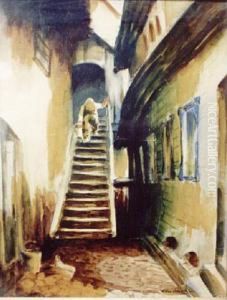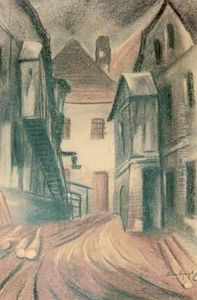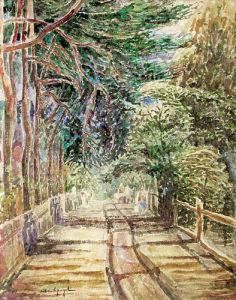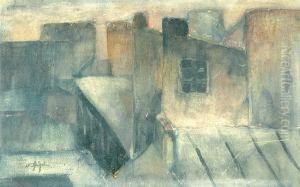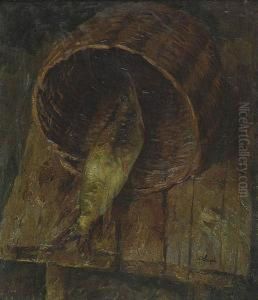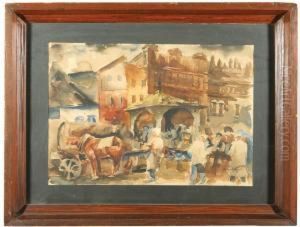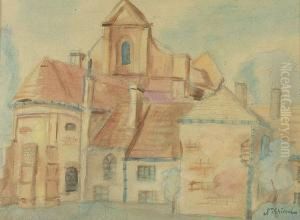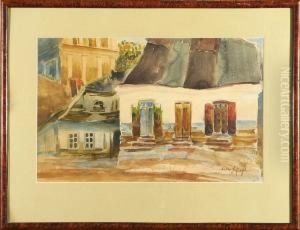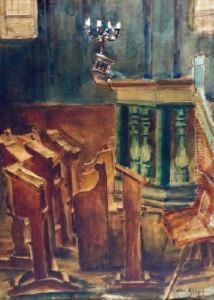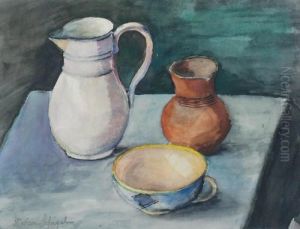Natan Szpigel Paintings
Natan Szpigel was a Polish-Jewish painter whose life and career were tragically cut short by the Holocaust. Born in 1907 in Łódź, Poland, Szpigel developed an interest in art at a young age. He studied at the Academy of Fine Arts in Kraków under professors such as Józef Mehoffer and Władysław Jarocki, which was a significant period in his artistic development.
Szpigel's work was primarily figurative, and he became known for his portraits and depictions of Jewish life and culture in Poland. His paintings often reflected the vibrant and dynamic character of pre-war Jewish society. Szpigel was part of a larger movement of Jewish artists in Poland who sought to express their identity through art during a time of growing anti-Semitism.
With the rise of Nazi Germany and the onset of World War II, Szpigel's life and art were profoundly affected. In 1939, with the German invasion of Poland, Szpigel and his family were confined to the Łódź Ghetto, where he continued to create art under harrowing conditions. Despite the desperate circumstances, he managed to produce numerous sketches and paintings that documented life in the ghetto.
Natan Szpigel's promising career was tragically cut short when he was deported to the Chełmno extermination camp, where he was murdered in 1943. His artistic legacy survives through the works that were preserved by friends and family members, offering a poignant and enduring testament to the lives and culture that were destroyed during the Holocaust. Szpigel's art serves not only as a personal legacy but also as a historical record of a Jewish community that once thrived in Poland.
